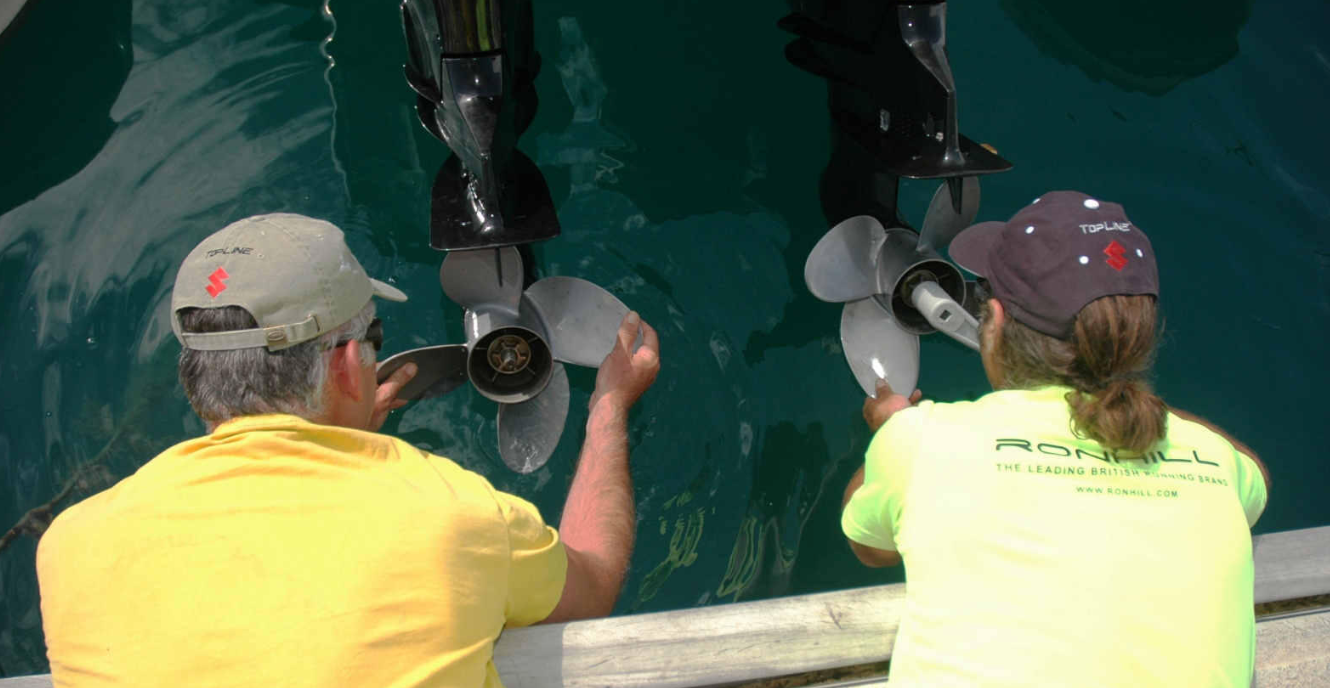Explaining How Propeller Cup Works
Apart from the diameter, pitch and number of blades on a propeller, other design elements of the blades, including the thickness, the weight of the prop and the material all effect the performance. Another trait that must be considered the cup of the propeller blades.
The cup of a propeller blade is the curvature running along the trailing edge. It often extends across the blade tip. The concave surface of this curvature faces towards the side of the blade that "bites" and thrusts the water aft.
Like Adding Pitch
The size of this curvature varies from propeller to propeller and is usually in the range of ½” to ¾” (1.27 cm to 1.91 cm). This curved lip on the blade’s trailing edge improves a propeller’s performance because it lets it get a better grip on the water.
When we change from a propeller without cup to a cupped one (all other specifications and features remain the same), the second one behaves as if it has a higher pitch than the first. This because the cupped area has the effect of increasing the angle of the pitch which mimics an increase in pitch.

The second one gives us higher speed than its nominal pitch because of the cup and therefore works like a prop with more pitch. Putting cup in a propeller equals increasing the pitch by an inch or two (2.54 cm to 5.08 cm). The degree of the pitch's increase depends on how intense (more concave) the curvature of the cup is.
More Pitch Means More Load
Remember that adding cup to a propeller increases the load applied to the engine so it’s reasonable to expect a drop in rpm of about 150-400, depending on the amount of cup.
The advantages for the application of cup do not stop here. In addition to improving grip for acceleration, cup gives the propeller better grip in turns. Because the cup is applied to the trailing edge of the blade, the propeller holds more water to the blade surface. This reduces ventilation and slipping so it permits higher angles of trim and engine mounting positions for outboards.

In some cases, the propeller can be run in a partially surfacing application, reducing drag at higher speeds.
Cup vs. Rake
When cup is added to the trailing edge of the blade it increases the pitch of the propeller. When it is added to the blade tip it increases the prop’s rake.
So when cup is added along the trailing edge of the blade and extends to the blade tip it will increase the pitch and rake of the propeller. Cup changes the pressure distribution along the blade increasing the buoyancy in front of the trailing edge.
This change in buoyancy is critical when trying to control and limit cavitation.